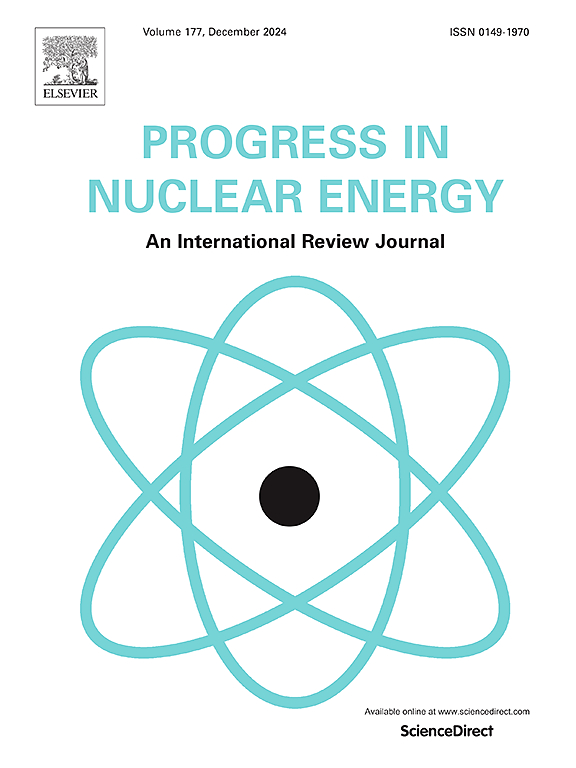利用铁渣3195稳定固化核电站金属结构腐蚀产生的氧化污泥
IF 3.3
3区 工程技术
Q1 NUCLEAR SCIENCE & TECHNOLOGY
引用次数: 0
摘要
将废污泥与烧结剂铁果粉混合,对比分析了烧结剂在污泥中的均匀分布和不均匀分布。在装有不锈钢处置罐的核电站中,由于长期接触放射性废液而产生的不锈钢氧化物基污泥,应采用固化处理的方法。在90%的氧化污泥废液中加入10%的铁渣3195,可制得稳定的固化污泥。固化污泥的生产过程由三部分组成:3195铁块与污泥均匀混合,在室温下用液压机对混合粉末进行压缩成型,900℃加热,使3195铁块均匀分布的固化体形成稳定的固化污泥。铁渣与氧化污泥均匀混合后的稳定固化污泥的抗压强度为4.97 MPa,非放射性Co的可浸出性指数为16.9±0.0647 MPa。本文章由计算机程序翻译,如有差异,请以英文原文为准。
The use of ferro frit 3195 to stably solidify oxide sludge generated by corrosion of metallic structure in nuclear power plant
Sludge waste was mixed with ferro frit powder, a sintering agent, and the homogeneous and inhomogeneous distributions of the sintering agent in the sludge were compared and analyzed. In nuclear power plants containing stainless-steel disposal tanks, stainless-steel oxide-based sludge is generated from long-term exposure to radioactive fluid waste, and this sludge waste should be disposed of via solidification. By adding only 10 % ferro frit 3195 to 90 % oxide sludge waste, stable solidified sludge was made. The production processes of solidified sludge consisted of three parts: homogeneous mixing of ferro frit 3195 and sludge, compression molding of the mixed powder by hydraulic press at room temperature, and heating at 900 , where the solidified body with the homogeneous distribution of ferro frit 3195 could form stable solidified sludge. The leachability index of nonradioactive Co and the compressive strength of stable solidified sludge made by homogeneous mixing of ferro frit and oxide sludge were 16.9 0.0647 and 4.97 MPa, respectively.
求助全文
通过发布文献求助,成功后即可免费获取论文全文。
去求助
来源期刊

Progress in Nuclear Energy
工程技术-核科学技术
CiteScore
5.30
自引率
14.80%
发文量
331
审稿时长
3.5 months
期刊介绍:
Progress in Nuclear Energy is an international review journal covering all aspects of nuclear science and engineering. In keeping with the maturity of nuclear power, articles on safety, siting and environmental problems are encouraged, as are those associated with economics and fuel management. However, basic physics and engineering will remain an important aspect of the editorial policy. Articles published are either of a review nature or present new material in more depth. They are aimed at researchers and technically-oriented managers working in the nuclear energy field.
Please note the following:
1) PNE seeks high quality research papers which are medium to long in length. Short research papers should be submitted to the journal Annals in Nuclear Energy.
2) PNE reserves the right to reject papers which are based solely on routine application of computer codes used to produce reactor designs or explain existing reactor phenomena. Such papers, although worthy, are best left as laboratory reports whereas Progress in Nuclear Energy seeks papers of originality, which are archival in nature, in the fields of mathematical and experimental nuclear technology, including fission, fusion (blanket physics, radiation damage), safety, materials aspects, economics, etc.
3) Review papers, which may occasionally be invited, are particularly sought by the journal in these fields.
 求助内容:
求助内容: 应助结果提醒方式:
应助结果提醒方式:


